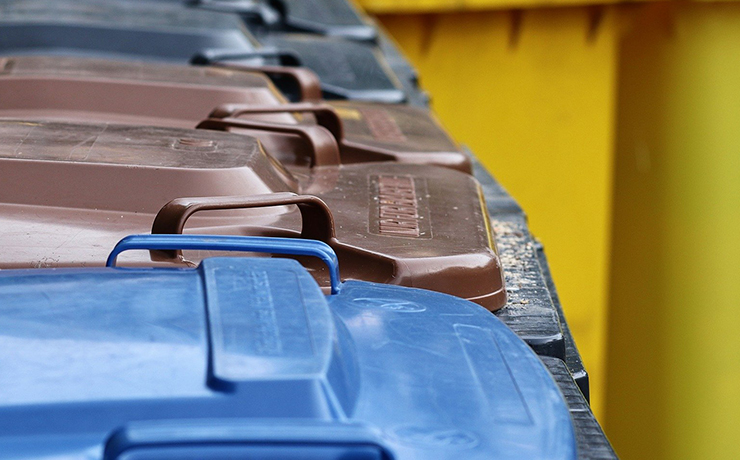7 myths about waste separation

What does the future of the waste management industry look like? To be successful in this market, you need to flexibly stand firm with the industry’s dynamics. Read about industry trends here.
Most of us will be well aware of how important it is to separate our waste properly. But throwing your waste into the right waste bin is sometimes not so easy. Some products are not just made of one material, such as an envelope with a plastic window. Should the envelope be thrown into the waste paper bin? Do I have to remove the plastic window first? Before I go into these questions, and some of the other myths about waste separation in more detail, let me first clarify one other point: just why is waste separation so important?
Why is waste separation so important?
If we are to guarantee the coming generations a world that we have been used to, it is important that every single one of us aims to live sustainably—and that means separating our waste according to its type. The more thoroughly waste is separated, the more effectively recyclable products can be extracted from the sorting plants. The EU’s goal is to recycle 100% of discarded products by 2030, thus ensuring an environmentally friendly recycling economy. Pre-sorting waste is an important part of this process. If a large amount of leftover food is dumped in a recycling bin, or recyclables are in the organic bin, this makes the process of recovering valuable reusable products much more difficult. The soiled waste then has to be declared as residual waste and must be incinerated, not recycled. Recycled products have enormous potential to save energy and water:
- Producing new glass bottles from waste glass gives a 75% energy saving compared to producing from raw materials.
- Producing new paper consumes twice as much energy as producing recycled paper.
- Producing a whole tonne of recycled paper uses 30,000 liters less water—this corresponds to a 70% reduction in water consumption.
- Melting recycled aluminum uses 5% less energy than manufacturing the same amount of metallurgical material from scratch.
- In Vienna, for example, about 15,000 tonnes of scrap metal is collected annually. Enough to produce 65 Ferris wheels or 1.6 million bicycles.
To save more energy and water in the future and to aim for a closed-loop economy, I would like to expose 7 myths about waste separation:
What about handling dangerous goods? In particular, how do you transport them? Hazardous goods management helps with this.
Growing together
7 myths about waste separation
The following 7 myths about waste separation should help you to make the right decisions in your own household. Each individual’s actions are vital for a more sustainable future. Your decision to separate waste also has an impact on an overall greener world.
1. “Separating glass by color is not important.”
When glass containers are emptied into the waste collection vehicle, it usually appears that the glass from both containers is just thrown into one vehicle container. Glass collection vehicles, however, have two chambers. So colored glass and white glass are actually transported separately. Therefore, in answer to myth number 1: separating colored glass from white glass certainly makes a significant difference. A single green champagne bottle is enough to turn 500 kg of white glass green.
2. “Collecting scrap metal is pointless, as it is removed from residual waste anyway.”
Residual waste goes (at least in Vienna) to the incineration plant to generate energy and heat. Nothing is pre-sorted here; everything is put together in one bunker. Scrap metal, such as aluminum, causes considerable damage in the incinerator tray and should therefore not be simply thrown into the residual waste bin.
3. “All plastic is the same”—plastic packaging can be stacked together without any problems.
This should also be avoided. Plastic packaging or containers stacked inside each other may save space in the waste bin or trash can, but cause problems at the sorting plant. The different types of plastic are separated from each other by an infrared sensor in the sorting system. The sensor cannot detect them if they are stacked inside each other. Moreover, all plastics are not the same. Different types of plastics have very differing properties. The various plastic types are processed into different products during the recycling process.
4. “Bioplastics belong in the organic waste bin.”
Bioplastics, such as biodegradable plastic bags, do not belong in the organic waste bin, nor the plastics recycling bin, but in the residual waste bin. Producing bioplastic bags saves CO2 and reduces the use of oil, and these bags are definitely biodegradable. However, it takes about 3 months for such a bag to decompose and this period is too long for a composting plant. There are still no effective separation processes for disposing of bioplastics bags in the plastics recycling bin.
5. “An empty pizza box can go in the waste paper bin.”
It is not really clear in which waste bin a pizza box belongs.
Clean pizza cartons, free of food leftovers, may be put into the waste paper bin. Even the odd oil stain is not a problem. But if there are still some bits of pizza, corn kernels and the like in the carton, they should be thrown into the residual waste bin.
6. “Window envelopes must not be put in the waste paper bin.”
Window envelopes are allowed in the waste paper bin, even if the window is made of plastic. This also applies to documents with staples. The reason for this is the recycling process and the fiber preparation of paper. The light (plastic) parts are skimmed off in a flotation process, while any staples sink to the bottom and can be removed.
7. “Tissues and kitchen towels can be thrown away in the waste paper bin.”
Paper can be recycled between 5 and 15 times depending on its quality. Tissues and kitchen towels, on the other hand, are not of sufficiently high quality because of their short fibers and should therefore be put in the residual waste bin.

